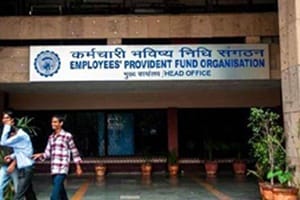Despite the rule, notified last year, allowing it to have equity exposure, the Employees’ Provident Fund Organisation (EPFO) is moving warily on this front.
After the government allowed the EPFO to invest up to 15% of incremental deposits in equity or equity-related products in March 2015, the retirement fund body made a pioneering move last year and invested 5% of such deposits in exchange-traded funds.
However, it has developed cold feet on increasing the exposure further this fiscal, despite the returns from ETF being attractive (about 12%) .
Labour minster Bandaru Dattatreya had in the past said the equity exposure would certainly go up in the current fiscal given the better-than-expected returns subscribers could get.
A decision on enhancing the exposure has to be taken by the labour ministry, which is not bound to go by what the Central Board of Trustees (CBT) or the central trade unions suggest. The ministry has only itself to blame for delaying the move.
Sources, however, said sensing a huge backlash from the Opposition while Parliament session was on, the ministry was delaying an announcement on raising the exposure. Now that the session is over, an announcement was likely in a week or so, they said.
The EPFO started investing 5% of its incremental deposits in exchange-traded funds (ETFs) since August last year and invested Rs 7,465 crore till June 2016. Stressing that current allocation of 5% incremental flows to equity may not be sufficient for meaningful contribution to overall portfolio return of the EPFO, a committee constituted by EPFO’s Finance Audit and Investment Committee (FAIC) has also recommended that the allocation to equity can be made 10% this fiscal. The panel pointed out that at present the EPFO’s equity investment constitute less than 1% of the total corpus compared with the global average of around 30%.
In a recent study, jointly conducted by Assocham and Crisil, suggested that retirement funds such as the Employees’ Provident Fund (EPF) should be allowed to enhance their asset allocation into equity from the current level of 5-15% of its annual incremental deposits, which roughly stands at Rs 1.2 lakh crore. This will help realise the country’s huge demographic advantage. “At 5%, overall exposure to equity could barely reach 5% in 20 years, and even if allocation was increased to 15%, it may take three more years to cross the 5% overall mark,” the study said.
Globally, the exposure level is much higher. In OECD countries, for instance, the average is near 30%. Even the non-OECD countries are putting their demographic advantage to better use by investing in equities.
The policy of EPFO’s investment in the ETF has drawn a lot of flak from a section of trade union representatives, who accused the government of playing with poor workers’ money.


